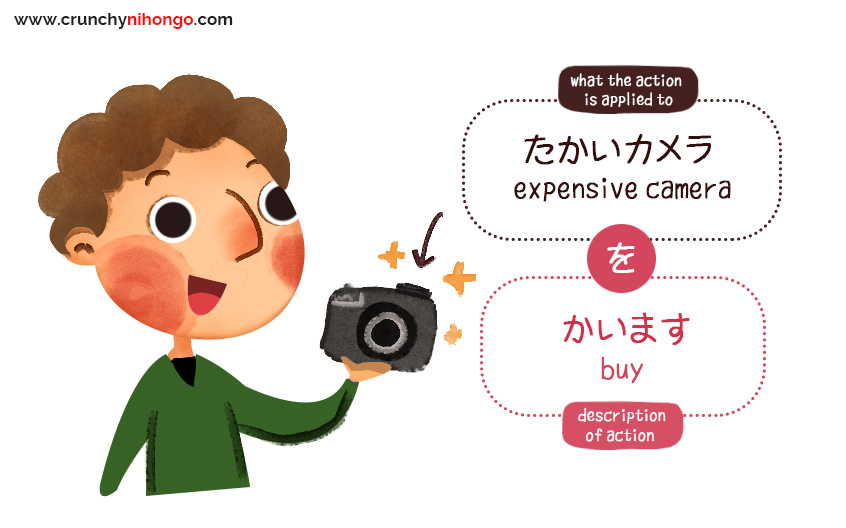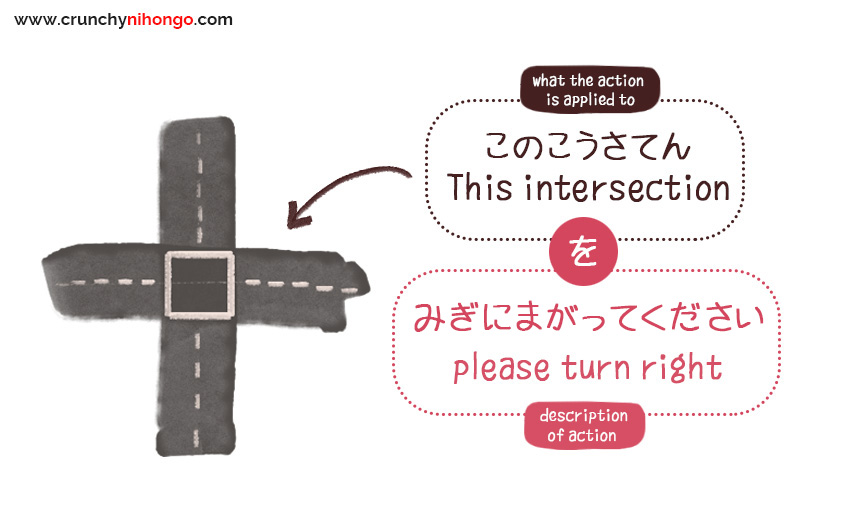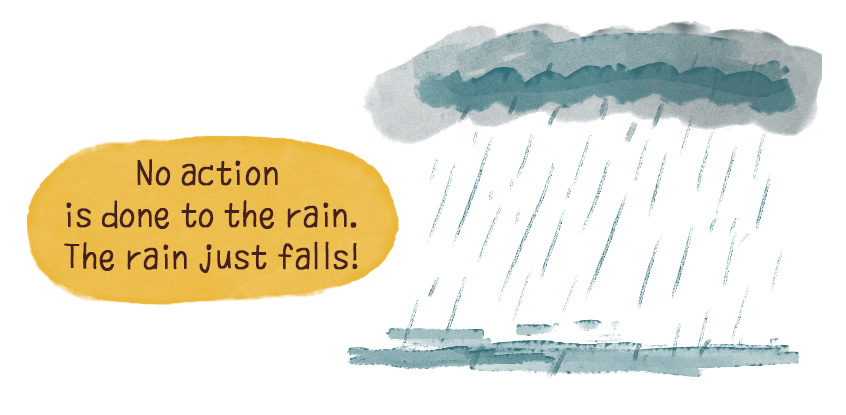Hi ! We hope this site helps you! ٩(ˊᗜˋ*)و As an Amazon Associate, we earn from qualifying purchases without additional cost. Click to read more about our Privacy Policy or Affiliate Disclosure
Quick links to the other two particles lessons: Particle は | Particle が
Particle を

This particle is used with verbs, to mark something which is being affected by action/movement explained after it. Take a look at the example to easily understand the pattern.
Useful notes As with は, when used as particle, it’s being read as ‘o’. It’s safe to say that when you find this character it’s always a particle though!
…………………………………………

ジョンは高いカメラを買います
John wa takai kamera O kaimasu
John buys expensive camera.
>>The を shows that the action of [kaimasu: buy] is being done to [takai kamera: expensive camera]

昨日、おいしいラーメンを食べました
Kinou, oishii ra-men O tabemashita.
Yesterday, (I) ate delicious ramen.
>>The を shows that the action of [tabeta: ate] is being done to [oishii ramen: delicious ramen]
Quite simple right? 😀
…………………………………………
Important Try not to treat を equivalent as English direct object marker
Most books/lessons tells you that を is direct object marker. It’s quite true in most case, but if you think of it as equivalent of English version of object marker, you will be confused to some of it’s usage. It make more sense to say that を let us know as to what the action mentioned is being applied to. Here’s some example:
…………………………………………
Example 1:
その交差点を右にまがってください。
Sono kousaten O migi ni magatte kudasai
Please turn right at that intersection.
It will be confusing to think that [Sono kousaten : That intersection] is and object of [migi ni magatte kudasai : please turn right].
But if you think of it like this, it makes sense right?
The を shows that the action of [migi ni magatte kudasai : please turn right] need to be done at [Sono kousaten : That intersection].

…………………………………………
Example 2:
 公園をはしります
公園をはしります
Kouen O hashirimasu.
Running (through) the park.
>>The を shows that the action of [hashirimasu : run] is done at the [Kouen : Park].
…………………………………………
を cannot be use for intransitive verbs such as ‘furu (to fall as in the rain)’.
In this case you use が. Basically, intransitive verbs means that the action is not done at something/object. It’s just happened! That is why you cannot use を with verb like this.
雨が降ります
Ame GA furimasu
The rain falls
>> It cannot use ‘o’ because the act of falls is not done to the rain. It just falls!

…………………………………………
WAKARIMASU VS を HANASHIMASU
Here’s another example sentence which create much confusions… Most people confuse as to why we cannot use ‘o’ for wakarimasu as we do with hanashimasu. But if you read the rules above regarding を which mark something that being done by the action, it make sense.
私は英語が分かります。
Watashi WA eigo GA wakarimasu.
I understand English
>>’Wakaru’ is actually an intransitive verb which doesn’t allow objects. Although it’s being translate as “I understand English”. The real literal meaning is “As for me, English is understandable”.
‘Hanashimasu’ which means to speak is a transitive verb which have an object, so you can use を for it normally.
私は英語を話します。
Watashi WA eigo O hanashimasu
I speak English
…………………………………………
Move on to next particle!
Quick links to the other two particles lessons: Particle は | Particle が

Hey there! Love your blog and especially your drawings.
I have one question though, regarding your example with the “I ate delicious ramen”. In the drawing it spells “ate” tabemashita in hiragana but underneath you write it in romanji as tabeta. Is this a mistake or can you use both as “ate”?
Hey there Amanda! Thanks for writing to us °˖✧◝(⁰▿⁰)◜✧˖° Yes, you are correct, there is a typo error and I have fixed it thanks to you (๑•̀ㅂ•́)و✧ But you can indeed use both [tabeta] and [tabemashita]. Both words mean “Ate”. The only difference is that [tabemashita] is a polite version and [tabeta] is casual (for friends/family).
Hi! I found this article really helpful, but regarding the example about the park, you wrote はしりみあす, but wrote ‘hashirimasu’ instead of what should be ‘hashiriMIAsu’ (following the hiragana)… I assumed the romaji was right, because MIAsu sounds a bit odd, but I’m not sure!
Thank you for noticing and send us your feedback 。゚✶ฺ.ヽ(*´∀`*)ノ.✶゚ฺ。 It has been fixed, thanks to you~
あの…how to use へ and に particle?
i like your blog anyway
Unfortunately we haven’t covered that material yet 🙁 You could subscribe to our site and you will get notification when we cover it 😀 Thanks for your patience 😉